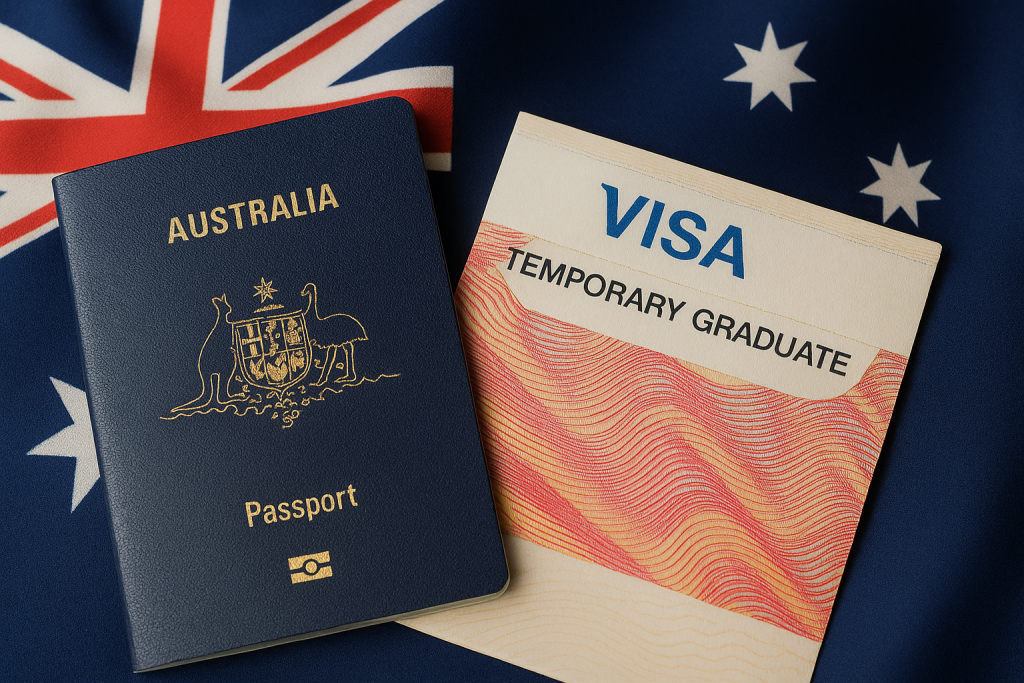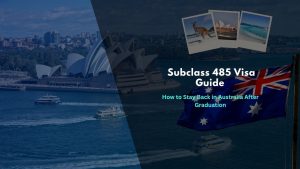Introduction: The New 485 Visa Australia for International Students
Imagine this: You’ve just finished your bachelor’s degree in Australia. You’re relieved, excited—and unsure. Everyone around you seems to be applying for the 485 visa the moment they graduate. But you hesitate. Should you do the same?
Here’s the reality—what worked even a year ago may not work now. Due to recent 485 visa changes in Australia, rushing into the Temporary Graduate Visa (subclass 485) may no longer be the safest or smartest move for every international student. In fact, it could block your chances of permanent residency (PR) altogether.
So, when exactly should you apply for a 485 visa? Let’s break it down, based on updated rules, real-life cases, and what experts are now advising students.
What Is a 485 Visa—and Why It Used to Be Simple
The 485 visa is designed for international students who have completed an eligible qualification in Australia. It allows graduates to live, study, and work in the country temporarily—typically for 2 to 4 years depending on their qualification.
Previously, this visa was seen as a natural next step. Graduate, apply, get 2–4 years to live and work, and then transition into PR. Simple. But not anymore.

What’s Changed in 485 Visa Rules in 2024–2025?
The Department of Home Affairs has introduced tighter eligibility criteria and reduced flexibility in PR transitions. Now, applying for a 485 visa without a long-term plan can limit your future options—especially if your degree doesn’t align with occupations on the PR list.
Here’s the key shift: once you’ve used your 485 visa, you can’t get another one (except in very specific cases). So, using it too early can waste valuable time you might need later in your migration journey.
Think Twice Before You Hit “Apply” (Client Message Integration)
Here’s where many students go wrong—and here’s what your migration advisor probably won’t say upfront:
“We don’t hurry to apply for a 485 visa. As the rules have changed, your options after applying for a 485 visa are limited. Think twice before you opt for a 485 visa.”
If you’ve completed a bachelor’s degree and are considering the 485 visa, pause and reflect. Ask yourself:
- Does my bachelor’s degree lead to PR?
- Is my occupation on the Medium and Long-term Strategic Skills List (MLTSSL)?
- Can I realistically get PR within the 2 years this visa gives me?
If the answer is no, you need to consider other options—like pursuing a master’s degree or changing your field of study to align better with PR pathways.
Why? Because after completing a master’s, you’re eligible for a 3-year 485 visa instead of 2. That extra year can mean the difference between securing PR or having to leave Australia.
Even diploma holders and trade graduates should think carefully. The 485 visa isn’t a free pass—it’s a strategic asset. Use it wisely.
If you’re unsure which study option aligns with your PR goals, platforms like ApplyOn offer personalised course guidance and visa insights that can help you map out the safest and smartest next step—without the guesswork.
Real Example: When Rushing Can Backfire
Take Ananya, for example. She completed her Bachelor of Business in Melbourne and applied for the 485 visa within weeks. Two years went by in a blur of odd jobs and applying for PR. But her degree wasn’t on the skilled occupation list, and she didn’t have enough points. When her 485 expired, her only choice was to go back to study—or leave.
If she had delayed the 485 and done a master’s in accounting or IT instead, she would’ve gained both PR-eligible qualifications and an additional year on her visa.
The Smarter Path: Aligning Study with PR Strategy
Many students today are strategically delaying the 485 visa and going for PR-eligible master’s programs first. Here’s why it works:
- You get a new student visa (often 1.5–2 years)
- After that, you qualify for a longer 485 (3 years)
- More time means better job prospects, more points, and more time to secure PR
This route also opens up state nomination and employer sponsorship opportunities that usually take time to unlock.
If you’re confused about the course-to-PR match, ApplyOn advisors can help you evaluate which degrees align with Australia’s skilled occupation lists—giving you a future-focused study plan before you commit.
When Exactly Should You Apply for the 485 Visa?
The best time to apply is when:
- You’ve completed your highest qualification aligned with PR
- You have a clear job or PR pathway in your field
- You’re confident you can meet PR criteria within the 485 duration
Avoid using it as a stopgap or fallback plan. Think of the 485 visa as a one-time opportunity to strengthen your PR case.
Also, make sure you apply within 6 months of your course completion—but only after weighing all your options.
Key Mistakes to Avoid
- Applying for 485 just because “everyone else is”
- Not checking whether your occupation is PR-eligible
- Assuming you’ll “figure it out later”
- Ignoring advice on pursuing further studies
- Misaligning your visa duration with PR timelines
Conclusion: Don’t Just Apply—Strategize
The 485 visa isn’t just a post-study work visa anymore—it’s a strategic tool. One wrong move and you might lose your shot at permanent residency.
So if you’re a student considering your next move after graduation in Australia, the smartest thing you can do is slow down. Talk to a migration advisor. Explore all your study and PR options. Think of your future self.
Because it’s not about when you apply—it’s about whether the timing is right for you.
FAQs
1. Can I apply for a second 485 visa later?
In most cases, no. The 485 visa is a once-per-lifetime visa unless you meet specific criteria (like regional study bonuses or pandemic-related extensions).
2. Is a master’s degree better for PR than a bachelor’s?
Often yes. Master’s graduates typically get a 3-year 485 visa and access to more PR-aligned occupations.
3. What happens if I apply for 485 too early?
You may run out of time before securing PR and won’t be eligible for another 485 visa.
4. Does every bachelor’s degree qualify for PR?
No. Only degrees linked to occupations on the skilled occupation list improve your PR chances.
5. Can diploma holders apply for a 485 visa?
They can, but visa duration and PR prospects are more limited compared to bachelor or master graduates.
Ready to Plan the Right Path?
Instead of rushing, choose a path with purpose. ApplyOn can help you explore study-to-PR pathways that match your background, goals, and timelines.






